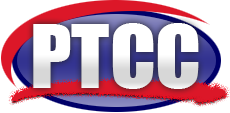Sewage Clean Up Service
Mold and Sewage Services in Anne Arundel County
Finding a sewage leak is the start of a bad day for anyone, but our experts are specially trained to solve the problem quickly and professionally.
A sewage backup situation requires a fast response to reduce health risks. Even if the water does not look dirty, it can contain up to 3 million bacteria per teaspoon. We can come in right away and remove the contaminated materials, and leave you with a clean, sanitary environment for you and your family.
We utilize only the highest quality equipment to ensure a pleasant environment for you, both during and after the clean up process.
Sewage poses a very significant threat to human health. However, the severity of the health threat depends on the content of the sewage and the degree and extent of penetration into the building environment. The degree of penetration is dependent on the porosity of contaminated materials, the quantity of sewage, and the amount of time the sewage remains in contact with materials.
The following specific guidelines are presented with a goal of restoring the contaminated area such that the health of occupants is protected from any risk of pathogen-caused disease.
- Remediation should begin as soon as possible. The longer the contamination is allowed to persist, the greater the potential for microbial growth and resultant damage.
- Unprotected occupants and workers should be evacuated from the affected areas during the initial stages of decontamination, cleaning, and disinfection (e.g., until sewage has been removed and disinfectants applied).
- Technicians in the vicinity of the sewage during the initial stages of decontamination, cleaning, and disinfection should be equipped with an organic vapor HEPA respirator, rubber gloves, splash goggles, and boots. In the case of overhead contamination, technicians should also be equipped with goggles, hard hats, and protective suits. Technicians should report any wounds that occur during restoration and take care to avoid “cross-contamination” from affected to unaffected areas by foot traffic or material handling.
- After water removal, all affected materials should be decontaminated by spraying with a disinfectant solution. It is not the intent of this pre-spray to effect full disinfection because the presence of organics precludes this. The objective is to initiate the reduction and containment of microorganisms as quickly as possible.
- All affected materials should be evaluated for porosity (permeance). From this inspection, materials should be rated as highly porous (saturated), semi porous, and nonporous. Some materials may exhibit varying degrees of porosity, depending on the exposed surfaces. For example, the surface of painted drywall has very low porosity, yet the base of the wall may be unpainted or have exposed gypsum paper that is highly porous.
- Highly porous (permeance factor >10) materials that have been exposed to sewage backflow and have a value that exceeds the cost of restoration such as high-value rugs and carpet, upholstery, and other textiles should be removed and restored off site. Highly porous materials with low cost or replacement value, such as carpet cushion, carpet, cardboard, tackless strip, wicker, and straw should be removed and discarded as soon as possible. Other materials, such as saturated mattresses and cloth upholstery, regardless of value, cannot be restored and should be discarded. If disposal is necessary, these materials should be bagged in plastic for removal to a proper disposal site.
- Semi porous (permeance factor of >1 to 10) materials, including items such as linoleum, vinyl wall covering and upholstery, and hardboard furniture, along with construction materials such as wood, painted drywall and plaster should be cleaned, disinfected, or replaced as part of the initial restoration process. If these materials are not removed or properly disinfected, they can become reservoirs for growth of microorganisms.
- Nonporous materials (permeance factor £1) such as FormicaT, linoleum, vinyl, and tile finishing materials can be inspected for subsurface contamination with a nonpenetration moisture meter. Although these materials may be rated as nonporous, they must be evaluated carefully because contamination can migrate from the perimeter and become trapped below the surface. If migration of contamination below the surface has not occurred, these materials may be fully restored.
- Heavy organic matter, especially raw sewage and silt, must be physically removed by any safe means available. This may include the use of shovels, squeegees, septic pump trucks, wet vacuums, and moisture-extraction machines. Water must also be extracted from floor-covering fabrics such as carpet and rugs. All tools and machines, especially recovery tanks, wands, and hoses must be cleaned and disinfected after use.
- Residual organic matter in cracks and crevices can be removed by pressure washing with a disinfectant solution. The solution then must be recovered with an extraction unit immediately after application to prevent further migration or saturation of contaminants into other porous materials.
- After removing heavy organics, affected materials must be cleaned before a second application of disinfectant takes place. Use of many cleaning agents, such as soaps and detergents, will solubilize most organic matter.
- After thoroughly cleaning all contaminated materials, a second application of disinfectant may be applied.
- Chemicals classified as disinfectants are appropriate for use in areas exposed to sewage backflow. These chemicals are defined as being capable of inactivating potential pathogenic microorganisms on inert substrates.
- Fully evaluate all factors that affect the success of decontamination. These include the organic matter present, extent of prior cleaning, type and level of microbial contamination, concentration and time of exposure to the disinfectant, and the nature of the material to be decontaminated.
We use steam and hospital grade sanitizers to get your environment clean and healthy right away. Contact us now and we can start right away. We can even help you to work with your insurance company if needed to help you file the necessary paperwork for your insurance claim. So don’t let sewage ruin your day completely, give us a call.
For immediate assistance call 301-725-6459 or Email us on our contact us page.
